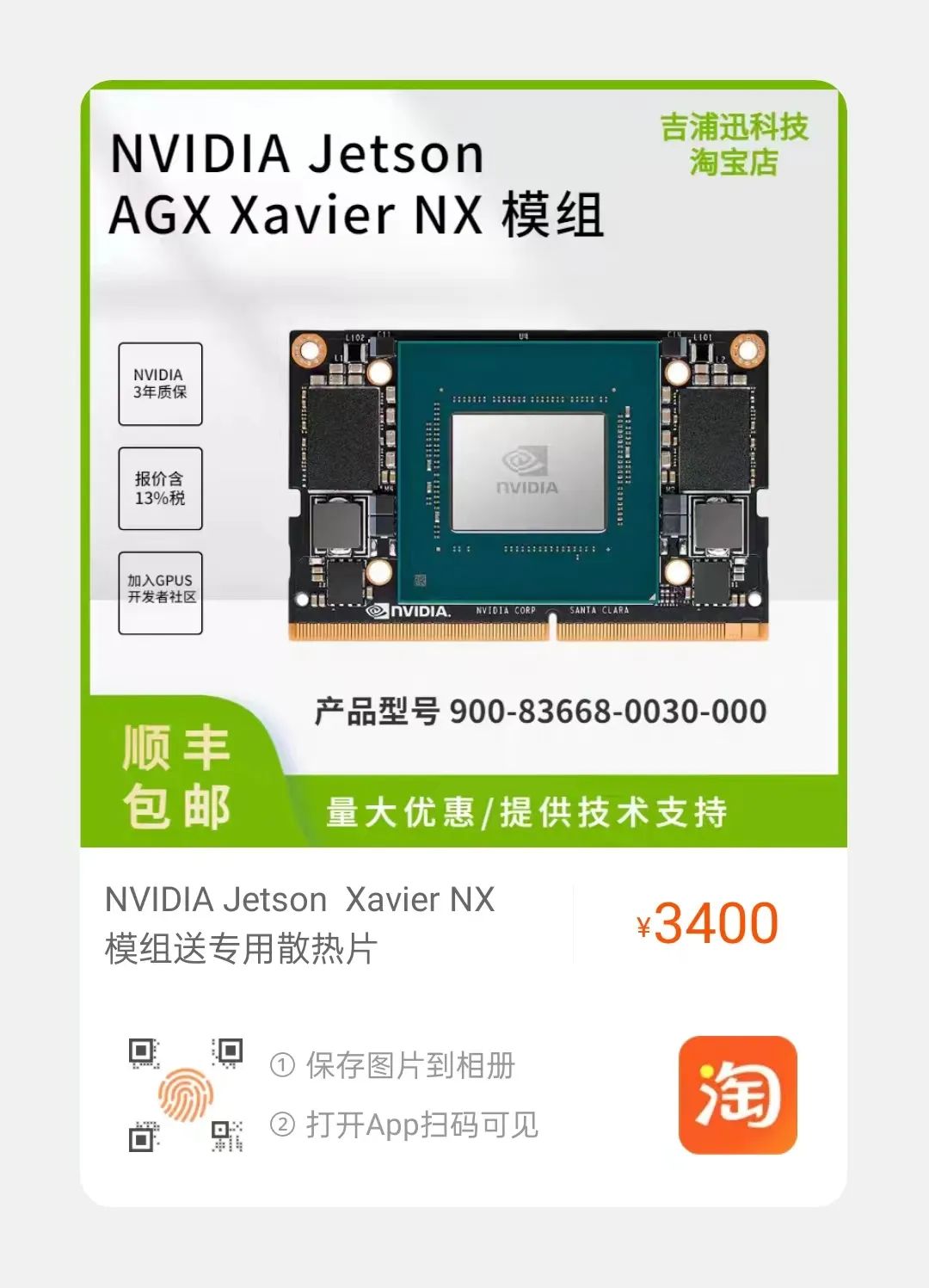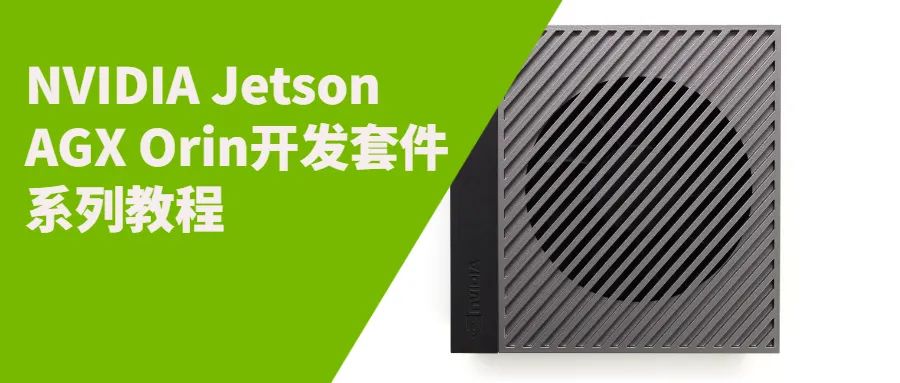
NVIDIA launched the new generation embedded development kit, the Jetson AGX Orin, in April. This is currently the most powerful, compact, and energy-efficient AI supercomputer on the market, suitable for advanced robotics, autonomous machines, and next-generation embedded and edge computing.
In this series, we will introduce how to utilize the Jetson AGX Orin development kit for embedded edge computing development.
Why Do We Need Jetson AGX Orin?
A new era of robotics is emerging, requiring an order of magnitude higher computational power. Robots are now entering the human world rather than working in isolation, necessitating multi-sensor perception, mapping and localization, path planning and control, situational awareness, and safety. These increasing tasks are driving the demand for more computation.
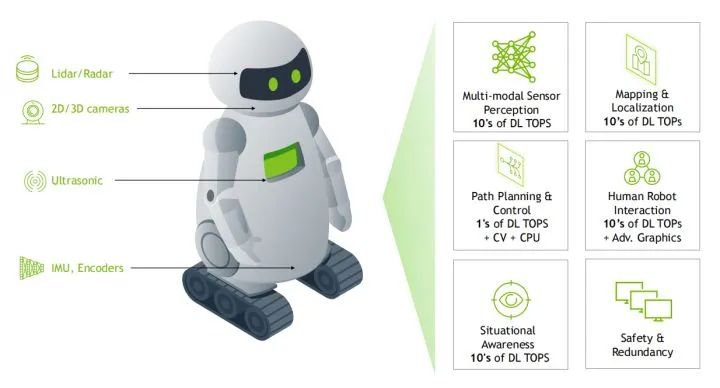
The Jetson AGX Orin can deliver 275 trillion operations per second, providing customers with over 8 times the processing power compared to its predecessor, the Jetson AGX Xavier, while maintaining the same palm-sized form factor and pin compatibility. The AGX Orin features an NVIDIA Ampere architecture GPU, Arm Cortex-A78AE CPU, next-generation deep learning and vision accelerators, high-speed interfaces, faster memory bandwidth, and multi-mode sensor support to support multiple concurrent AI application pipelines.
Specifications Comparison
Let’s compare the specifications of the Jetson AGX Orin development kit with the Jetson AGX Xavier development kit.
| Jetson AGX Xavier Development Kit | Jetson AGX Orin Development Kit | |
| AI Performance | 32 TOPS | 200 TOPS |
| GPU | 512-Core NVIDIA Volta GPU | 1792-Core NVIDIA Ampere GPU |
| Tensor Cores | 64 Tensor Cores | 56 Tensor Cores |
| CPU | 8-core ARM® v8.2 64-bit CPU, 8MB L2 + 4MB L3 | 12-core Arm Cortex-A78AE v8.2 64-bit CPU, 3MB L2 + 6MB L3 |
| DLA | 2x NVDLA | 2x NVDLA v2.0 |
| Vision Accelerator | 2x PVA | PVA v2.0 |
| Memory | 32GB 256-bit LPDDR4x | 137GB/s | 32GB 256-bit LPDDR5 | 204.8 GB/s |
| Storage | 32GB eMMC 5.1 | 64GB eMMC 5.1 |
| CSI Camera | 16-lane MIPI CSI-2 | 16-lanes MIPI CSI-2 |
| PCIe | x16 connector with x8 PCIe Gen4 or x8 SLVS-EC | x16 PCIe slot: Lower x8 PCIe Gen4 |
| Network | Gigabit Ethernet | Up to 10 GbE |
| Display | HDMI 2.0 Type A, 2x DisplayPort via USB-C | DisplayPort 1.4a (+MST) |
| USB Type-C | 2x USB-C 3.1 (supporting DisplayPort and USB PD) | 2x USB 3.2 Gen3 with USB-PD support |
| USB Type-A | 2x USB 3.2 Gen2 | 2x USB 3.2 Gen2 |
| USB Micro-B | USB 2.0 | USB 2.0 |
| M.2 Key M | NVME | x4 PCIe Gen 4 |
| M.2 Key E | PCIe x1 + USB 2.0 + UART (for Wi-Fi/LTE) / I2S + DMIC + GPIOs | x1 PCIe Gen 4, USB 2.0, UART, I2S |
| Other | 40-pin header (UART, SPI, CAN, I2C, I2S, DMIC, GPIOs), MicroSD / UFS card slot, eSATA (eSATA | USB 3.0 Type-A), 10-pin audio header, 8-pin automation header (system power and related signals), 4-pin fan header, DC power jack, Power, Force Recovery, and Reset buttons | 40-pin header (I2C, GPIO, SPI, CAN, I2S, UART, DMIC), 12-pin automation header, 10-pin audio panel header, 10-pin JTAG header, 4-pin fan header, 3-pin RTC battery backup connector, DC power jack, Power, Force Recovery, and Reset buttons |
| Dimensions | 105mm x 105mm x 65mm | 110mm x 110mm x 71.65mm |
Unboxing
The outer box of the NVIDIA Jetson AGX Orin development kit is black.
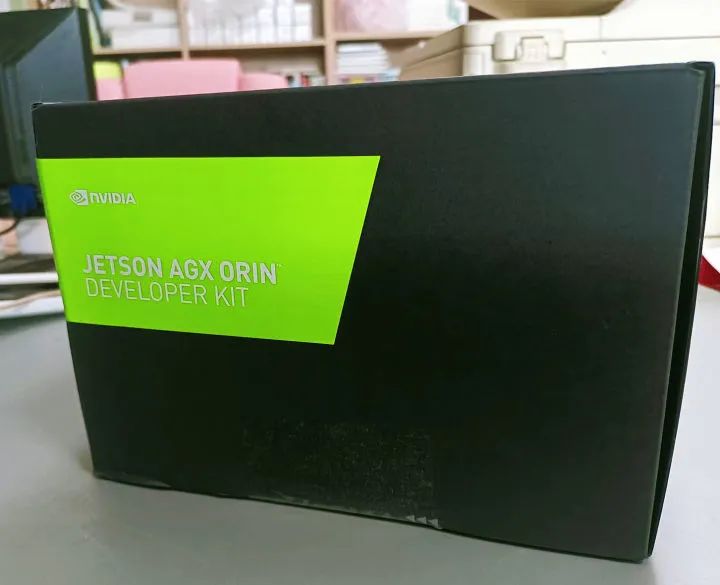
The specifications of the development kit are listed on the side.
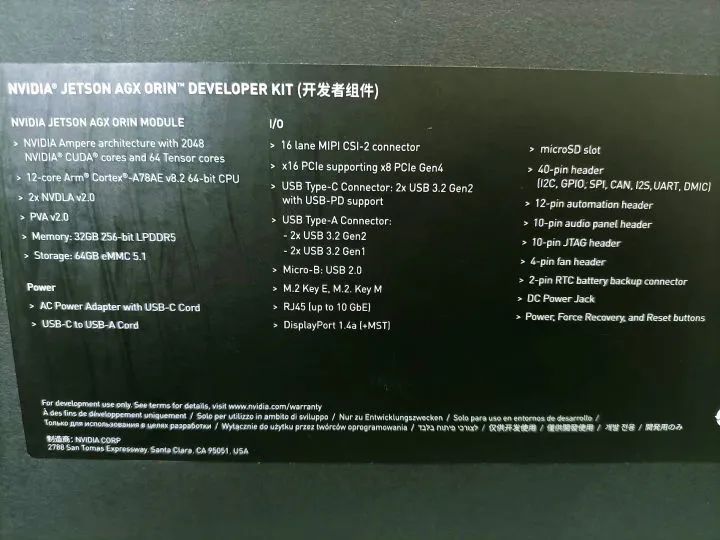
Please note that after purchasing the Jetson AGX Orin development kit, you need to keep the original packaging and accessories for at least one year. If there are quality issues within one year, the original packaging and accessories must be returned to the supplier for warranty.
Upon opening the outer box, you can see the development kit lying inside, looking very attractive!
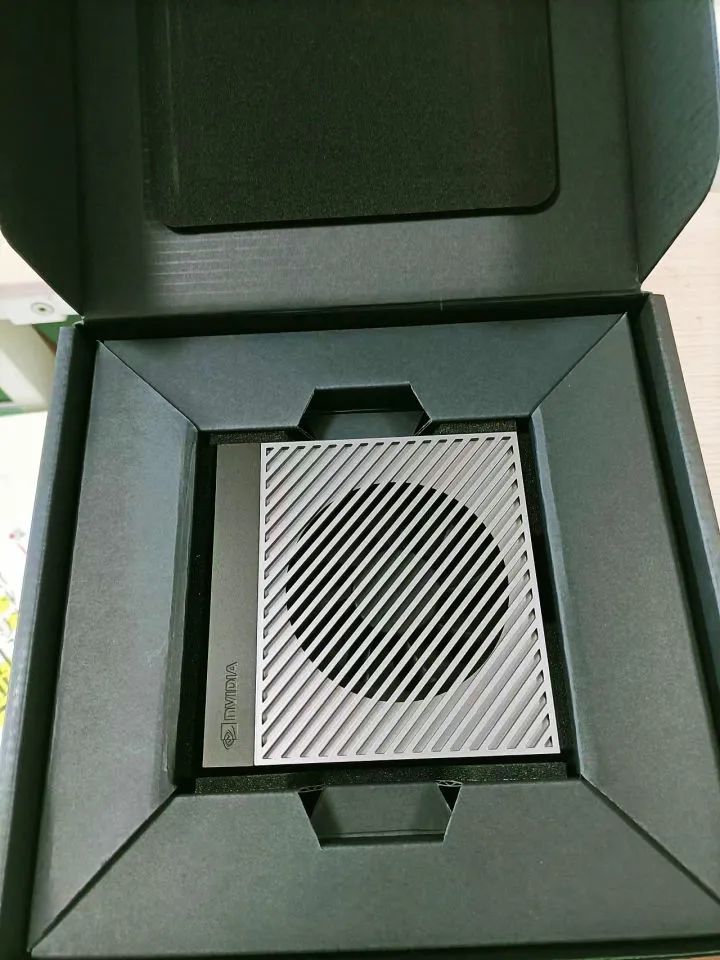
We will see three power cables and one USB-Type C cable included, as well as an adapter. These must be kept safe and not lost!
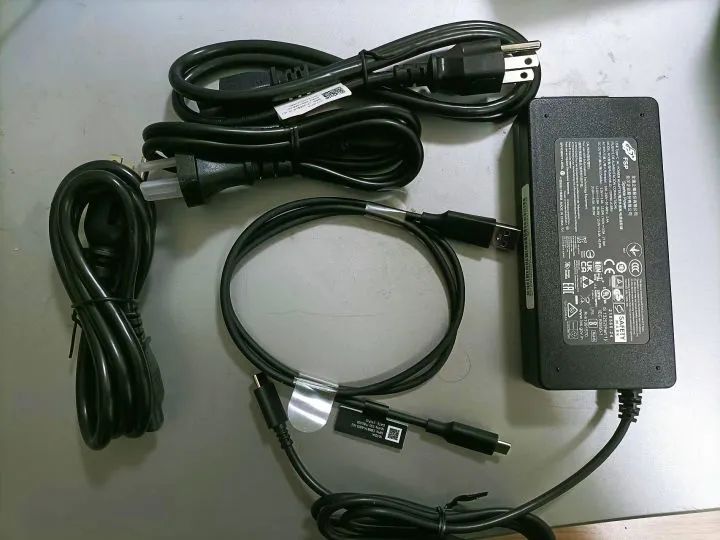
Note the specifications of the power adapter included with the AGX Orin:
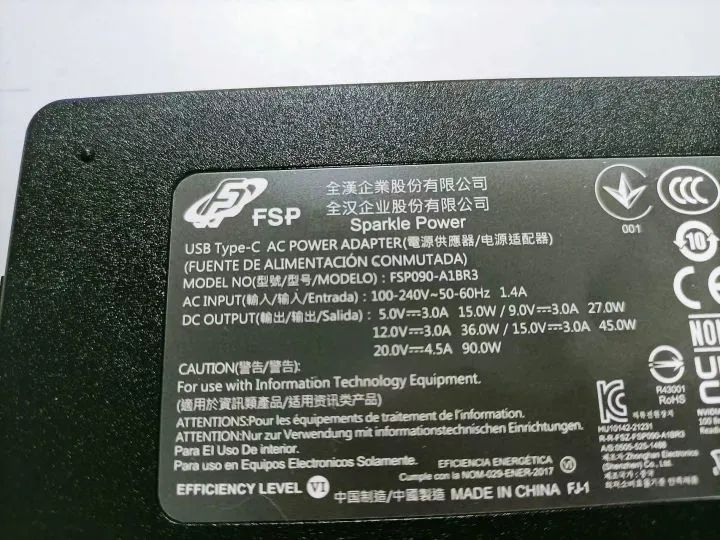
Now let’s look at the interfaces:
There are three buttons: Power button, Force Recovery button, and Reset button, along with a micro SD slot.
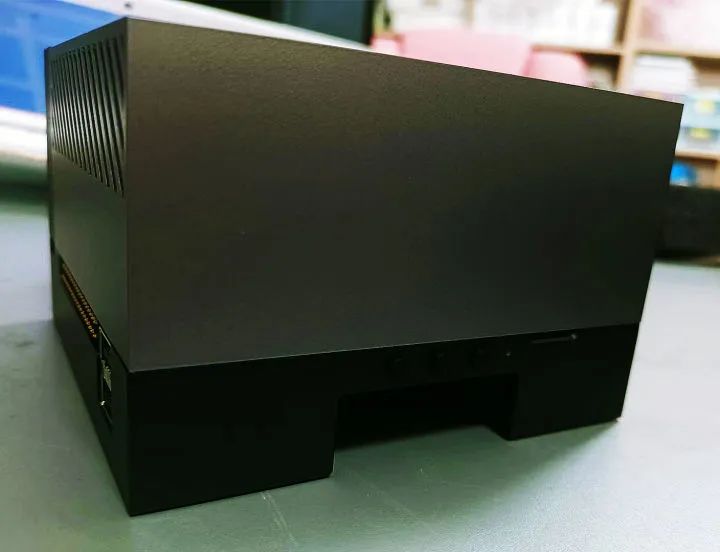
On this side, there are USB Type-C interfaces, a 40-pin Expansion Header, and two USB 3.2 interfaces.
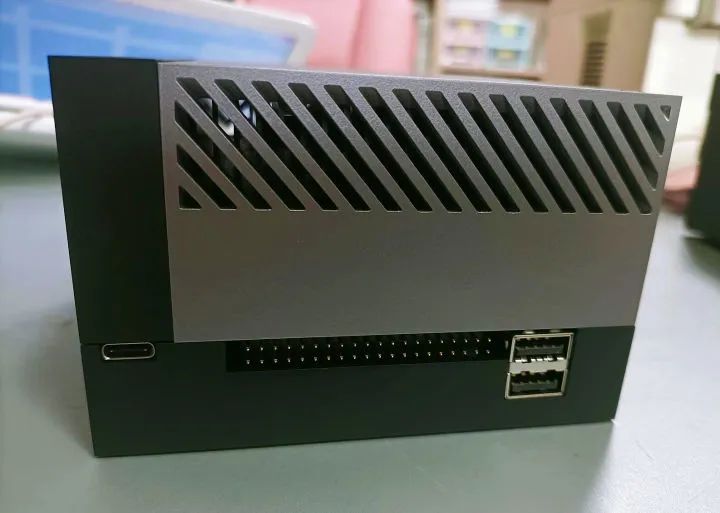
This side has a power socket, above which is a USB Type C interface, followed by an Ethernet port, and then two USB 3.2 interfaces (note that the AGX Orin has a total of four USB 3.2 interfaces).
Here comes the key point: the AGX Orin is equipped with a DP interface, unlike the HDMI interface of the AGX Xavier, which requires a DP display for output. Next to the DP interface is a Micro USB 2.0 interface.
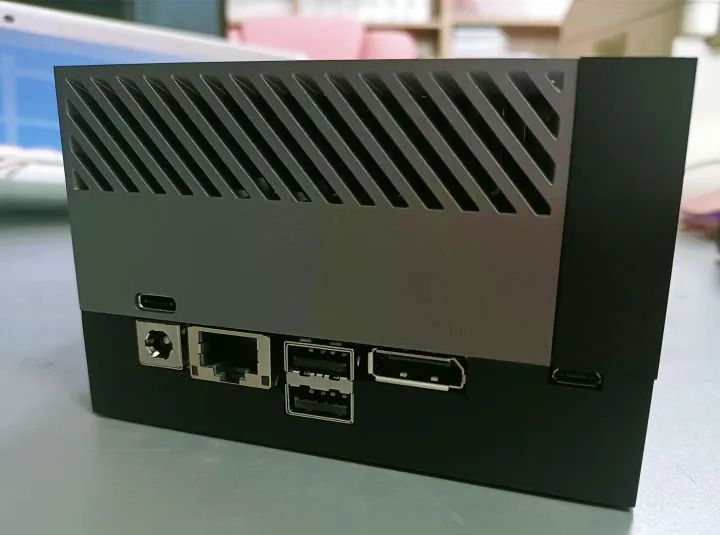
Turning the AGX Orin development kit upside down, we see that an M.2 SSD can be connected externally. Unlike the AGX Xavier, the AGX Orin comes with a built-in wireless network card, while the former does not come with one and requires installation, which saves a lot of hassle.
We can also see that there are two MIPI CSI interfaces here.
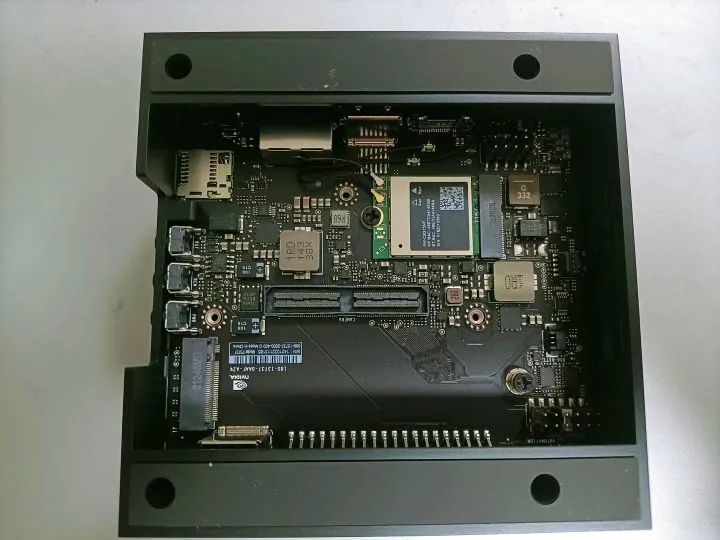
In the next article, we will install the development environment on the AGX Orin development kit.
More:
